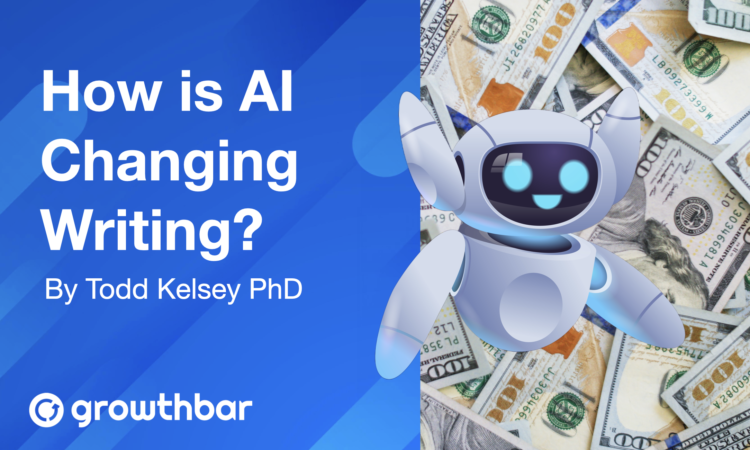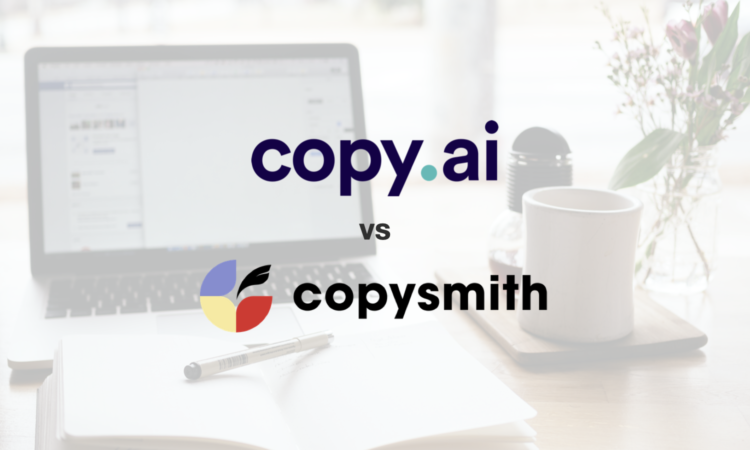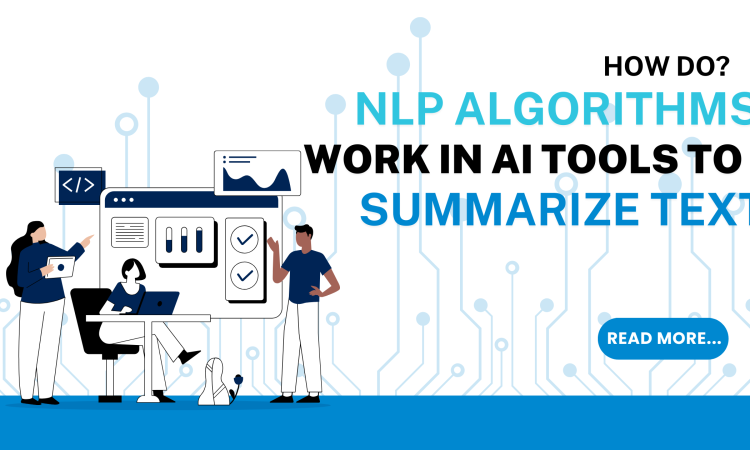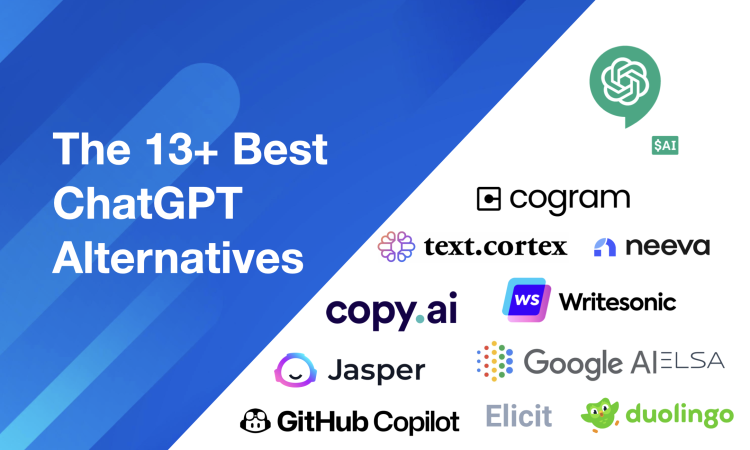- The 5 Ways AI is Changing Writing - December 10, 2022
Ended soon
In the area of how AI is changing writing, the most important question may not be “what can AI do now?”, but:
“Where is it going, and how fast?”
If you are a working professional, you are involved with content, and you may have heard about recent advances in what AI can do with writing. In order to understand it better, the 2022 State of AI report from www.stateof.ai offers some striking information and insight.
The report is meant to help investors, but it is very helpful for getting a snapshot of where AI is headed in general. One of the difficulties of keeping up with AI is how suddenly advances can happen, and how quickly a space can evolve. But a report like this gives you superpowers, to see across an entire space, including where it is going.
Here are a few things relevant to AI writing, which jumped out to me.
Table of Contents
1. DALL-E 2, Imagen and Parti: Generative Images
As of about June 2022, I started seeing posts from creative media professionals, such as Hollywood 3D artists, who had been admitted to a beta for Midjourney, one of many AI art tools that were rapidly gaining attention.
The artists generally were blown away, with understandably mixed feelings about the tools, in terms of their potential to make it easier for people to create art. Some artists were fearful, and others embraced the tools – by the time of writing stock photo houses are already offering AI-generated art, and many discussions are happening on how to respond to the phenomena.
Some tools were not publicly available at the time, but then an explosion happened where within 5-6 months, “generative ai” was starting to be suddenly talked about, and the main reason for the explosion was the significant advance in the quality of AI “models”, and refinements in the models, which significantly improved quality. (An AI model is the underlying code and algorithms).
Also Read: 5+ Ways AI Will Change Your SEO Strategy
2. The Explosion of Generative Writing Tools
I keep my eye on the AI space, but I was definitely surprised to find just how many generative AI startups had come on the scene, including those who were focused on various aspects of content, including writing.
In October, I came across this map from Ness Labs that someone had posted on LinkedIn; it is powerful evidence of the explosion, as well as a map to explore and consider various kinds of content tools.
In getting a sense of where things are and where things are headed, simply clicking through some of the sites and trying tools can be an excellent way to explore. (Going forward, hopefully, both of these entities will continue doing these maps). I definitely like how so many resources are drawn together visually on the page, and I believe such visuals can help learners to start developing a fluency of some of the tools and how they relate.
I’d start by looking at the upper right-hand corner, to understand the “geneaology” how the underlying AI models can impact all of the companies that are using these AI models.
For example, from left to right in the upper right-hand corner, we have Deep AI, Hugging Face, LobeAI, and OpenAI. If you haven’t already you’ll start to hear about these labs, and the largest impacts on AI in writing are likely to come with advancements in these models.
You don’t have to be a technical expert, but just exploring a bit can be helpful, and then I suggest wandering down into the playground of tools, hold your breath, and start trying the tools. Whatever floats your boat. I recommend starting with DALL-E 2, and just try making some art based on sentences. Try writing some art into being here.
And then, take a deep breath and start exploring the tools for writing.
Also Read: The 12+ Best AI Content Generator Tools
3. AI-Powered Marketing
Just as with all the varieties of visual images and other media that are possible to create with these tools, there are a variety of AI tools for the written word. For the last several years and somewhat before that, Natural Language Processing allowed more advanced analysis of text and language, and the ability to do things like scan chat text and empower a virtual chat agent to learn from conversations, and potentially be able to answer questions, on its own.
But when it comes to writing plausible text to convey information, it has been harder to make it plausible, because of AI limitations, or shall we say, past limitations. But, along with advances in the AI models, a significant leap enabled more powerful tools to be built – none of them are perfect, but they are much more powerful, and much more capable of automating writing.
This makes generative AI perfect for marketing copy.
In my own AI journey, what prompted me to even explore AI in 2017 was starting to recognize the implications of where AI was headed, and realizing that it was most likely just a matter of time before AI-powered tools could handle most or all digital marketing tasks. And so I started venturing out into the world of people commenting on AI, and mostly what you’d hear is things like “AI is powerful, but it won’t take your job away . . . yet”.
Some of the ways marketers can harness AI now include:
- Writing full long-form blog content with AI
- Social media generation across Twitter, Facebook, TikTok, Instagram, and more
- Product page and landing page copy
- Email marketing copy
- Scripts for webinars or podcasts
- And just about any other marketing application, you can dream up
There is definitely debate about whether these tools are replacing jobs, or augmenting skills, but either way, the tools are here, and my personal opinion is realist: learn as much as you can, and consider learning the platforms that can help you achieve more work, in less time.
Try Out: GrowthBar’s AI Writing Tool
4. Enterprises are Beginning to Invest in AI
These tools are definitely being adopted – usually, the best way to see how fast such tools are being adopted is to click through a map like the one above, and then look at the marketing for given tools – in some cases, they will show clients who are using the tools. Need more evidence? Check out OpenAI’s $20 billion valuation courtesy of Microsoft.
In recent years some corporations have been using early AI-powered writing tools without necessarily disclosing it, and a common use case has been completely automated financial reporting, and sometimes you can see telltales. But if the next question is – will it get better? The answer is yes, and the “Summer of AI” in 2022 may be the largest tipping point to date, as the startups rapidly emerge – and as companies start using more tools.
The economic forces of productivity and profit are very powerful, and as companies gain a competitive edge by being able to develop more content with expending less time and money, this underlying dynamic will help expand the area. Some companies and individuals may be able to completely ignore these tools, but most likely many writers in marketing and other areas will be faced with a choice, and many will adopt them.
Originally, corporations stuck to the rallying cry, “it will come but not yet”, and also “these fields are safe.” But as the world becomes more digital, it’s become easier for the work we do to become automated by AI. This means our current work is that much easier to automate than it was in 1920. So entire industries and professions can be disrupted much more quickly.
The most cutting-edge companies like Microsoft, Google, Facebook are rapidly investing in AI – so it’s easy to predict that most others will follow… or already have.
5. Ethics of Generative AI in Marketing
There are certainly ethical questions to all of this. One of the most common ones today is whether AI tools are adequately crediting their source material: in a nutshell, deep learning relies on data and writing that was originally created by humans. As the models learn they can work practically on their own (with “prompting” in the case of AI art tools, where you type in a particular phrase). So you have a bunch of images and writing out there that is publicly available, written by humans – and now the tools can leverage that to make it easier to achieve more.
At the present time, things have moved so fast that regulation and the law are murky, but in general, if its publicly available, it is fair game today.
One interesting thing that happen in the last two weeks of November was that DALL-E 2, one of the AI art tools, no longer allows you to type in the name of a particular artist. In essence, you could make art such as “a purple cat in the style of Picasso”, and what has been happening is modern live artists’ work and names have been used by ai artists, to generate new remixes in a particular style. The legal landscape is evolving, but for art at least, there is a grey area of what can be done, which may be a matter of decisions made at different companies – you can still make art “in the style of” using Midjourney, for example.
The other rather obvious ethical question surrounding AI is human job disruption. Can AI replace copywriters, marketers, and even coders? Maybe I will be thrilled to be completely wrong about the job disruption I see in the data I’ve looked at, showing significant headcount reduction currently, and expected into the future, as well as more job reduction than job creation.
I could be wrong, and I hope to be wrong, but there is a lot of evidence to the contrary. I would definitely say that it is really important for writers and everyone else to think of how to create new businesses and jobs, as new technologies evolve. In order for the optimist predictions to be true, there needs to be a whole lot of evolving going on, including people like you and me not just learning, but potentially leading.
Conclusion: GPT-4 (and then 5, 6, 7)
Now that you’ve gotten a taste of where things are at, and some treasure maps to go exploring (the state of AI report, and the map of AI startups), keep your eyes out for GPT-4, which should be released in December 2022, or January or February of 2023. It is an impending “AI model” which can impact every tool that relies on it and makes them significantly more powerful or efficient.
The AI models themselves and then the tools built on them are the biggest thing to keep an eye out for. Try them, adopt them, best wishes.




